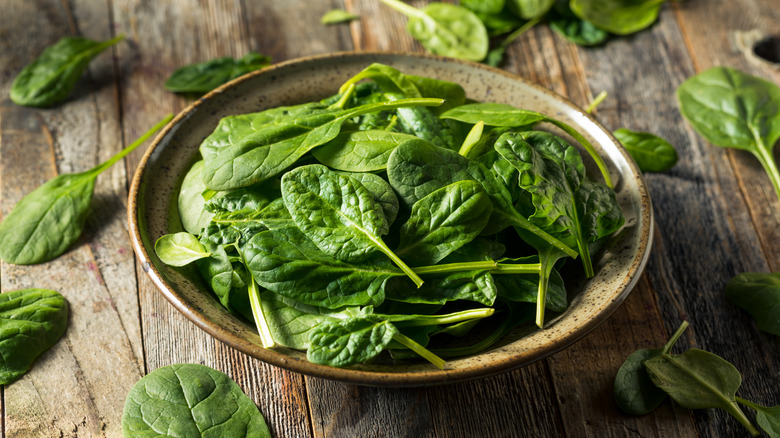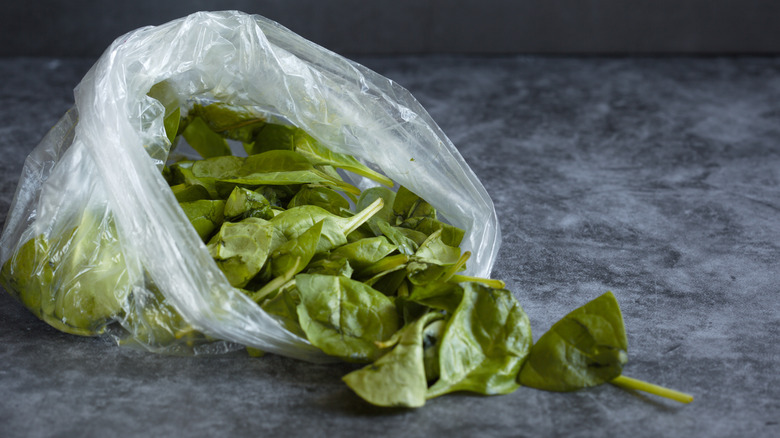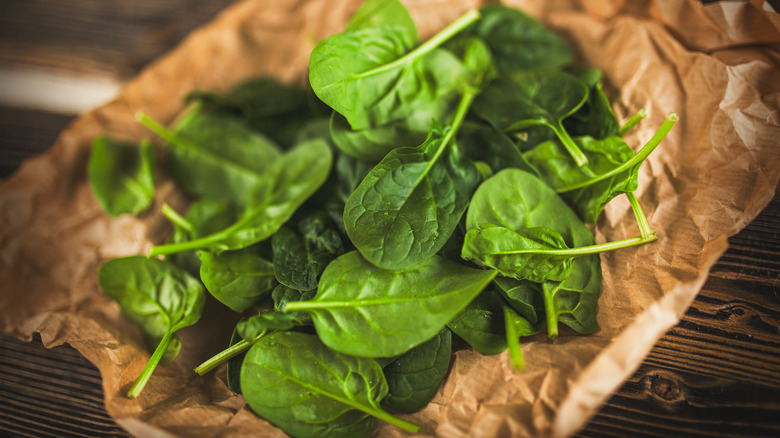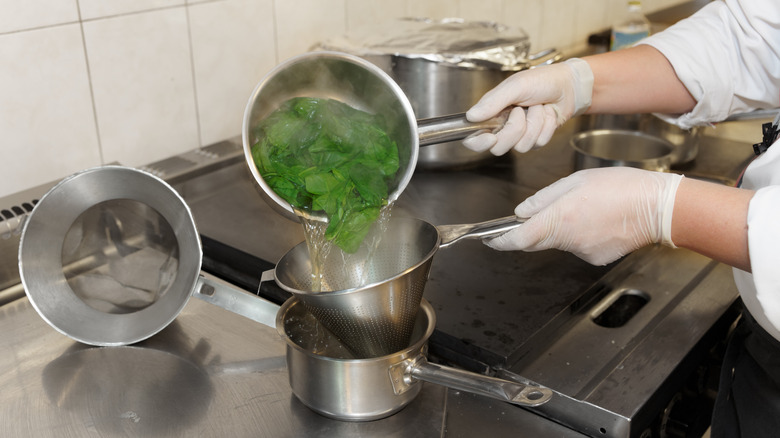The Absolute Best Ways To Keep Spinach Fresh
Tender greens like baby lettuce and spinach are delicate and delicious, but it's frustrating when you find the bag has turned brown or slimy after just a few days of being in the fridge. Like many kinds of produce such as basil, mushrooms, or leaf lettuce, spinach needs to be prepared and stored properly to extend its shelf life. But the first step toward elongating the life of your spinach leaves might actually begin at the grocery store.
When shopping for a fresh bag of spinach, there are a few telltale signs that the bag has already begun its decline. According to Bon Appétit, yellow leaves, soggy brown slime, or leaves that have started to wilt are all signals to choose another bag. To keep those same signs of spoilage from showing up in the bag once you get home though, you'll need to reexamine how you pack fresh spinach leaves for storage.
Keep it on the counter
While keeping spinach on the counter is OK for short periods of time, it certainly is not the best option for storing spinach for even a few days. Spinach will stay fresh if left on the countertop for a few hours, according to FoodsGuy. So, if you bring a fresh bag home from the grocery store and plan to use it for a meal shortly after, you do not necessarily have to place it in the fridge. But you will need to take a few steps to ensure it doesn't wilt on the countertop.
As Foods Guy explains, spinach begins to spoil the moment it gets wet and is not thoroughly dried. It also wilts when exposed to too much heat or sunlight. That's why spinach left out for use within a few hours needs to be placed somewhere without direct exposure to the sun. It is also best if it is not washed until the last moment for the freshest leaves.
Store spinach in the fridge
The best way to store spinach and keep it fresh is by utilizing your fridge. Refrigerated spinach leaves will stay good for up to a week or even 10 days, according to Allrecipes. The fridge will even work well to keep both fresh and cooked spinach good, so long as you plan to use either within several days of storing it.
To keep raw spinach fresh, remove it from its original packaging and loosely place it in paper towels before sealing it up in a resealable container or bag. The paper towels will help absorb any extra moisture that may appear inside the container while, at the same time, blocking gases from other kinds of produce that will speed up deterioration.
Spinach that has been cooked already can be stored in the fridge for up to five days, too. This method is simpler because the spinach only needs to be placed in an airtight container to stay fresh after it has been cooked.
Cook and freeze spinach
If you have more spinach than you can possibly eat within a week and a half, then you need to consider freezing it. Placing excess spinach in the freezer is a great way to extend the shelf life. The only downside to freezing spinach is that it does need more preparation to keep well. But by cooking the spinach, it helps remove the excess water in the leaves that would expand and ruin the texture of the spinach if frozen raw.
According to MindBodyGreen, blanching is the best way to preserve your spinach before freezing it. All you need to do is boil the leaves before stopping the cooking process by dunking the leaves in an ice bath. Once the water has been drained off from the blanched leaves, you can store the cooked spinach in an airtight container or resealable plastic bag. To use smaller portions for things like smoothies or to add into small batches of soup, store the spinach in smaller containers so you don't have to thaw all of the frozen spinach you want to use.



